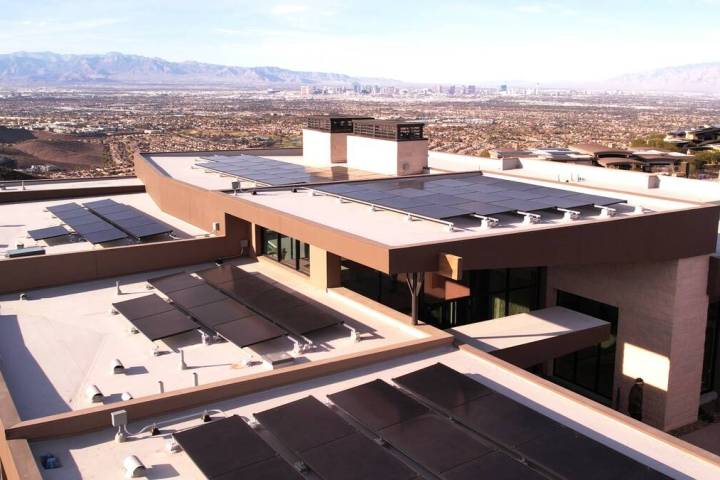The Shops at Crystals changed hands earlier this month with an agreement by two large retail investors to purchase the luxury center for $1.1 billion.
Atlanta-based Invesco Real Estate and Indianapolis-based Simon Property Group expect to close on the 324,000-square-foot venture in the second quarter. The retail space is part of CityCenter and is owned and operated by MGM Resorts International through a 50-50 joint venture with Dubai World.
“This transaction demonstrates the strength in Las Vegas as a premier destination for visitors around the world,” said Jim Murren, chairman and chief executive officer of MGM Resorts International. “A staple of CityCenter and ideally located on the Las Vegas Strip, The Shops at Crystals provides the pre-eminent luxury retail experience.”
With this purchase, Simon adds on to its already illustrious group of assets, which include the North and South Premium Outlet Malls and the Forum Shops at Caesars. Simon’s total assets equal 325 properties in its portfolio.
Its newest venture, Crystals holds several luxury flagship stores, including Louis Vuitton, Gucci, Dolce &Gabbana, Tom Ford, Prada, Fendi and Tiffany &Co.
The retail center has been open since 2009 and also has another 30 luxury retailers that are unique-to-market such as Celine, Saint Laurent and Richard Mille.
“The acquisition of The Shops at Crystals provides us with an extraordinary opportunity to obtain a high-quality asset in a growing marketplace,” said David Simon, chairman and chief executive officer of Simon Property Group.
“We look forward to perpetuating and building upon the successful foundation that CityCenter has created to further distinguish The Shops at Crystals as a leading retail destination.”
Representatives at JLL, a real estate brokerage firm that handled the sale, saw the purchase as a positive move.
“Las Vegas has experienced significant economic growth over the past few years, with a record number of visitors in 2015 and an increasing international clientele,” said Michael Zietsman, director at JLL.
“Visitors now spend more than half their travel budget on nongaming expenditures. A sale like this has never made more sense.”
Report: Several commercial markets on the move
A fourth quarter report from Dividend Capital Research, a Denver-based full-service real estate investment management firm, marked Las Vegas’ multifamily, industrial and hotel markets as being very positive for real estate returns. Other sectors, including retail and office, still lagged behind on the cycle of recovery.
A chart in the report showed the hotel and multifamily markets in Las Vegas in a state of equilibrium, a description in which supply equals demand and rental rates are at homeostasis.
The city’s multifamily market stayed ahead of the national average with a decline of 0.3 percent in vacancies in the fourth quarter report. National rents also fell 0.1 percent.
The industrial sector, also in a positive range, was marked as being inside of the expansion phase on another chart depicting the health of 50 metros across the U.S., including Las Vegas.
The expansion designation was described as having high rent growth and low vacancy.
On a national scale, rents grew 5.5 percent in 2015, according to the report. The expansion phase is also characterized as having new construction in progress with declining vacancy.
The office and retail sectors fell into the recovery phase; each sector had its own chart.
The chart’s designation characterizes Las Vegas as having declining vacancy and no new construction in these markets. Rental growth is also below inflation. Office, however, has moved closer to the bottom of the expansion phase since the third quarter report.
Nationally, the office space sector grew by 0.2 percent for rents in the quarter and nearly 4.5 percent for the year.
Construction material costs in free fall
The cost of doing business for construction firms got a bit lower, according to a national report from Associated Builders and Contractors in February.
The report, based on an analysis of the Bureau of Labor Statistics Producer Price Index, shows construction input levels fell 0.6 percent in February. Yearly declines equaled 3.7 percent for the construction industry in general.
Costs in the nonresidential sector fell even further at 0.7 percent from January to February and 3.8 percent in the previous 12 months.
Some of the largest drops came from the steel and iron market — dropping nearly 18 percent in the same 12 months.
“Weak global growth and the prospects of a strengthening U.S. dollar have helped suppress commodity and, therefore, material prices,” said ABC Chief Economist Anirban Basu. “The February PPI data do not reflect the more recent increases in various commodity prices, ranging in oil to iron ore, and it is quite likely that in construction materials prices will rebound some in March.
However, a significant run-up in prices is unlikely in the coming months, as little has changed to support stronger commodity prices.






